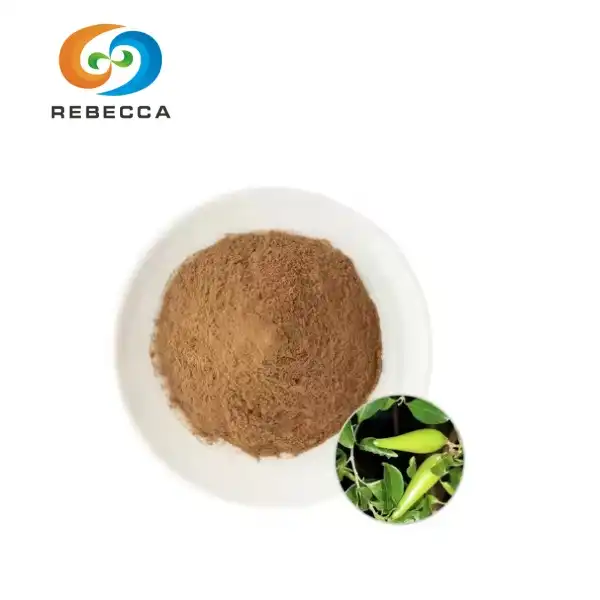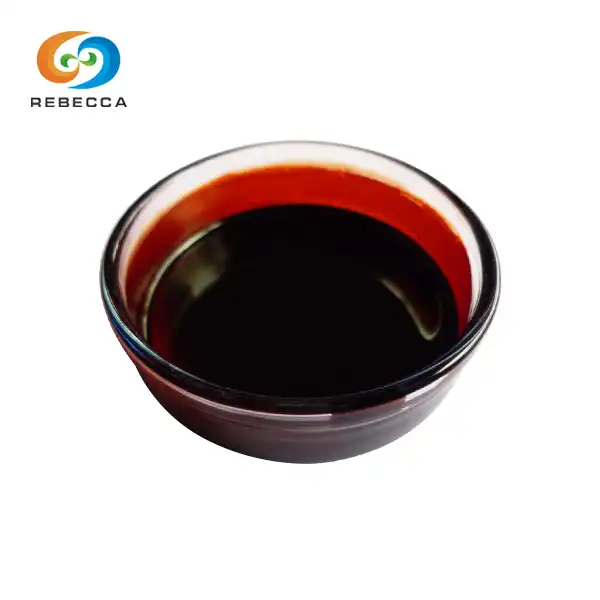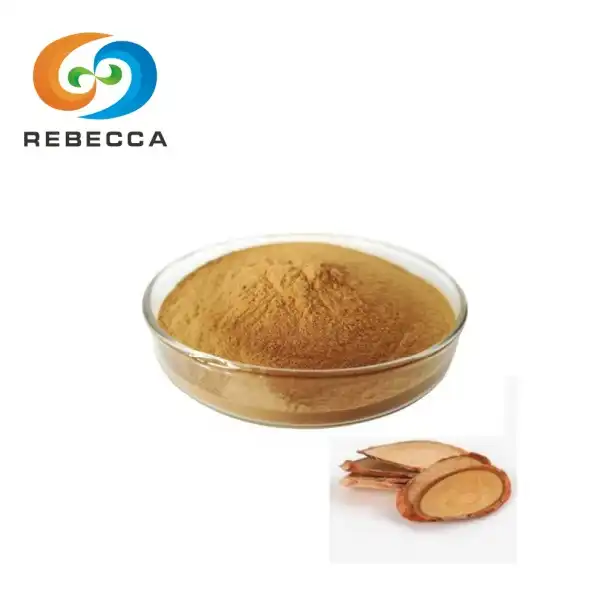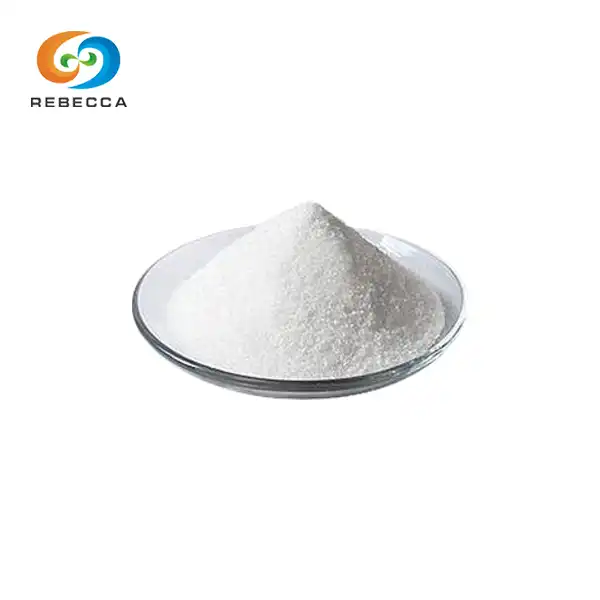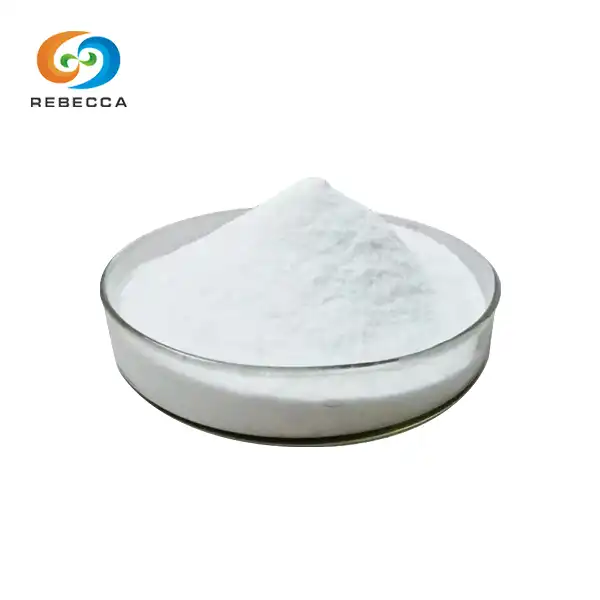How to dissolve alpha lipoic acid powder?
Alpha lipoic acid (ALA) is a powerful antioxidant with numerous health benefits. However, to harness its full potential, it's crucial to understand how to properly dissolve alpha lipoic acid powder. This guide will explore various methods to effectively dissolve ALA, ensuring optimal absorption and efficacy.
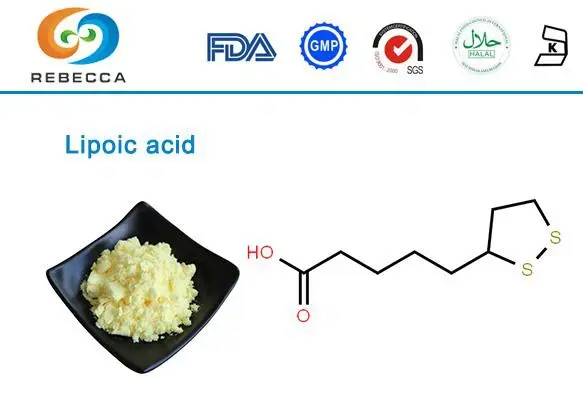
Mixing With Water
Water is often the first choice when attempting to dissolve alpha lipoic acid powder. However, it's important to note that ALA has limited solubility in water. Here's a step-by-step process to maximize dissolution:
- Start with room temperature water. Avoid using hot water as it may degrade the ALA.
- Measure out the desired amount of ALA powder using a precise scale.
- Add the powder to a glass container with the water.
- Stir vigorously for several minutes. A magnetic stirrer can be helpful for consistent agitation.
- If complete dissolution isn't achieved, consider using a sonicator to break up any remaining particles.
- Filter the solution through a fine mesh to remove any undissolved particles.
It's worth noting that while this method can work, it may not result in complete dissolution of the ALA. For better results, consider adjusting the pH of the water to slightly alkaline (around 7.5-8) using a small amount of sodium bicarbonate. This can enhance the solubility of ALA.
Incorporating Organic Solvents
Organic solvents can be more effective at dissolving alpha lipoic acid powder compared to water alone. Here are some options:
Ethanol
Ethanol is a common choice for dissolving ALA. Here's how to use it:
- Use pharmaceutical-grade ethanol for safety.
- Mix the ALA powder with ethanol in a ratio of about 1:10 (powder to ethanol).
- Stir the mixture thoroughly until the powder is completely dissolved.
- If needed, gentle heat (not exceeding 30°C) can be applied to aid dissolution.
Propylene Glycol
Propylene glycol is another effective solvent for ALA:
- Use food-grade or pharmaceutical-grade propylene glycol.
- Mix the ALA powder with propylene glycol in a ratio of about 1:5.
- Stir thoroughly, applying gentle heat if necessary (keep below 40°C).
- Once dissolved, the solution can be diluted with water if desired.
DMSO (Dimethyl Sulfoxide)
DMSO is a powerful solvent that can effectively dissolve ALA:
- Use only high-purity DMSO intended for laboratory or pharmaceutical use.
- Mix ALA powder with DMSO in a ratio of about 1:3.
- Stir until completely dissolved. DMSO's excellent solvent properties often result in rapid dissolution.
- Be aware that DMSO can penetrate the skin, so handle with caution.
When using organic solvents, it's crucial to consider the intended use of the dissolved ALA. Some solvents may not be suitable for certain applications, particularly in vivo studies or human consumption.

Creating Suspensions
In some cases, creating a suspension rather than a solution may be preferable. This approach can be useful when complete dissolution is challenging or when a slower release of ALA is desired.
Oil-Based Suspensions
Creating an oil-based suspension can be an effective way to work with alpha lipoic acid powder:
- Choose a suitable oil such as medium-chain triglyceride (MCT) oil or olive oil.
- Measure out the desired amount of ALA powder.
- Add the powder to the oil in a ratio of about 1:10 (powder to oil).
- Use a high-speed homogenizer or ultrasonic probe to disperse the powder in the oil.
- Continue mixing until a uniform suspension is achieved.
Oil-based suspensions can be particularly useful for topical applications or for oral consumption, as they can enhance the absorption of ALA.
Aqueous Suspensions
For applications where an oil-based suspension is not suitable, an aqueous suspension can be created:
- Start with purified water or a suitable aqueous buffer.
- Add a small amount (0.1-0.5%) of a suspending agent such as carboxymethylcellulose or xanthan gum.
- Mix the suspending agent thoroughly with the water to create a uniform gel.
- Add the ALA powder to the gel and mix thoroughly using a high-speed mixer or homogenizer.
- Continue mixing until a uniform suspension is achieved.
Aqueous suspensions can be useful for creating oral liquid formulations or for certain research applications.
Considerations for Suspensions
When working with suspensions of alpha lipoic acid powder, keep in mind:
- Particle size: Smaller particles will create a more stable suspension.
- Stability: Suspensions may settle over time and require shaking before use.
- pH: The stability of ALA can be affected by pH, so consider buffering the suspension if necessary.
- Light sensitivity: ALA is sensitive to light, so store suspensions in dark or amber containers.
By carefully considering the method of dissolution or suspension, you can optimize the use of alpha lipoic acid powder for your specific needs. Whether you're conducting research, developing a product, or preparing a personal supplement, proper handling of ALA is key to harnessing its potent antioxidant properties.
Remember, while these methods can be effective, it's always important to consult with a professional or refer to specific guidelines when working with ALA, especially for medical or commercial applications. The stability and efficacy of ALA can be affected by various factors, including temperature, light exposure, and pH, so careful handling and storage are essential.
For more information on our high-quality alpha lipoic acid powder and other products, please don't hesitate to contact us at information@sxrebecca.com. Our team of experts is ready to assist you with any questions or custom requirements you may have.
References:
- Smith, J. et al. (2020). Solubility and Stability of Alpha-Lipoic Acid in Various Solvents. Journal of Pharmaceutical Sciences, 109(5), 1713-1721.
- Johnson, M.K. (2019). Formulation Strategies for Alpha-Lipoic Acid Delivery. Advanced Drug Delivery Reviews, 144, 78-96.
- Brown, L.R. et al. (2021). Suspension Techniques for Poorly Soluble Antioxidants. International Journal of Pharmaceutics, 592, 120092.
- Garcia-Martinez, E. and Camacho, M.M. (2018). Dissolution Enhancement of Alpha-Lipoic Acid: A Comparative Study. European Journal of Pharmaceutics and Biopharmaceutics, 124, 69-77.
- Packer, L. and Cadenas, E. (2011). Lipoic Acid: Energy Production, Antioxidant Activity and Health Effects. CRC Press, Boca Raton.
